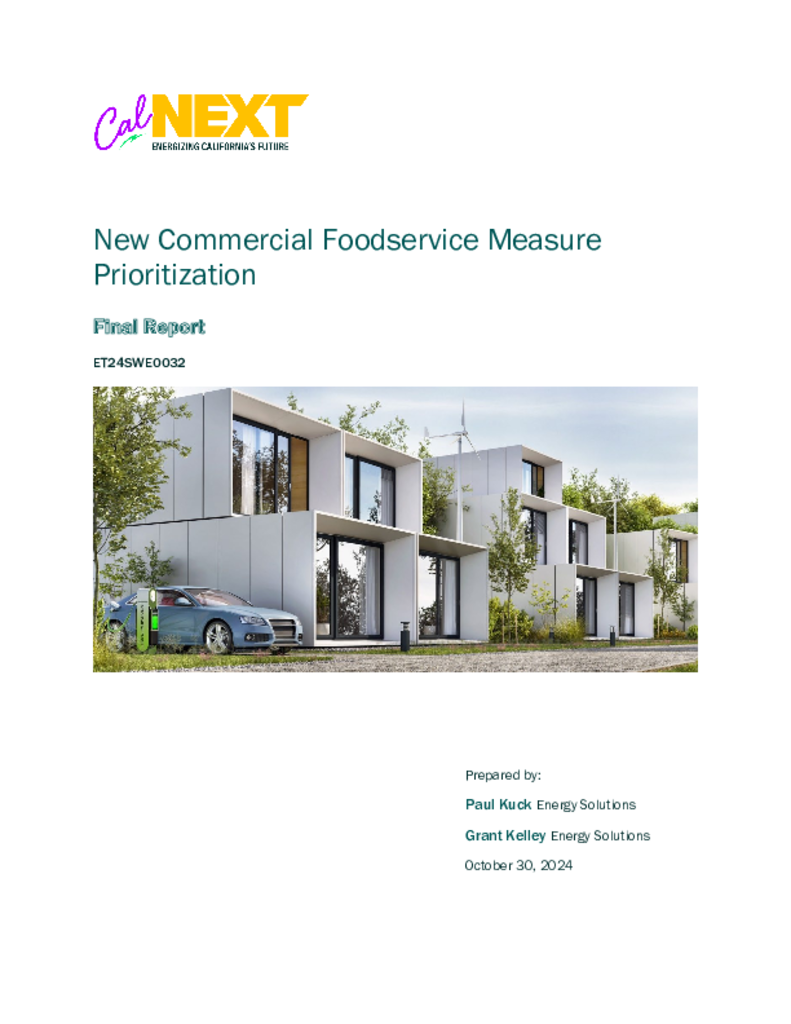ET24SWE0032 - New CFS Measure Prioritization

The existing commercial foodservice (CFS) measures offered in California (CA) incentive programs are the most common pieces of equipment for this industry. Many of these measures will be considered for appliance code standards in the coming years or removed from programs due to the gas incentive phase out initiative. This will leave the foodservice market, which has the highest energy intensity usage in the commercial sector, with fewer opportunities to drive savings despite a wide selection of energy intensive products used in this market. The undeveloped list of CFS equipment is comprised of a diverse range of equipment types, sales volumes, and energy intensity, but currently, there is limited aggregated data to determine which measures would provide the largest impact on the energy efficiency (EE) Investor-Owned Utilities (IOU) Portfolio. This project aims to develop a database of measure development criteria for potential new electric CFS measures to help prioritize measure development for EE IOU Programs. The Project Team will conduct an extensive assessment of non-incentivized CFS equipment including discussions with market actors to determine market trends and efficiency efforts, development of preliminary savings estimates, estimation of measure costs and sales volumes, and identification of equipment testing needs and fuel substitution measure potential. The collective data will help maximize the impact of limited measure development funds by identifying which technologies will be successful and cost-effective in EE Programs like the CA Instant Rebates Statewide POS Foodservice Program.
The Commercial Foodservice Measure Prioritization Project has developed a database to help investor-owned utilities prioritize energy-efficiency measure development for electric commercial food service programs. This was achieved through extensive assessments of non-incentivized commercial food service equipment including developing preliminary savings estimates, estimating measure costs and sales volumes, identifying equipment testing needs and fuel-substitution potential, and discussions with market actors to help determine market trends and efficiency efforts. This data was gathered to help maximize the impact of limited measure development funds by identifying which technologies provide the most savings and cost-effective opportunities in the energy-efficiency programs like the California Foodservice Instant Rebates Program.

